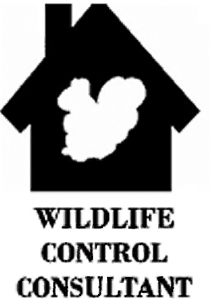The following article is presented by Mr.Stephen M. Vantassel an expert in wildlife control, consulting and training. He’s also an excellent writer which you can see for yourself in his blog and in his many books he has written. I am pleased to have an example of his work in this guest post and I think you will be too. Please feel free to comment below should you have any questions for Stephen or better yet, visit his website and see the massive amount of information he has available. Enjoy:
10 Ideas to Consider Before Leaving Your Cage Trap
1. Did you select the right location? Set the traps for the convenience of the animal not your convenience. Bait will never overcome the problems of a poor set location.
2. Are your traps properly stabilized or secured? A wobbly trap is an empty trap because it will easily misfire. Traps placed on roofs or on buildings need to be securely anchored so they don’t become a fall hazard.
3. Did you consider the area around your trap? Cage traps allow animals to reach out of the cage and grab (or destroy) items in the area. Raccoons are known to shred shingles when trapped on roofs. One wildlife control operator placed a trap too close to the garden hose. When he returned the next day, the raccoon had pulled all 50 feet of the garden hose into the trap forcing him to by the customer new one. Consider the 1 foot area around a trap (in all directions) at risk when setting a trap. Use plywood, hardware cloth etc. to protect surfaces from damage.
4. Is the cage trap’s treadle free from obstruction? Setting traps on soil or mulch occasionally stirs up debris underneath the treadle thereby interfering with its action. Test fire the trap before leaving.
5. Is the cage door free from obstruction? When setting cages up against burrows, particularly around buildings, the door can become jammed by the structure or your barriers. Always ensure that your barricades or positive trapping systems don’t interfere with door action.
become jammed by the structure or your barriers. Always ensure that your barricades or positive trapping systems don’t interfere with door action.
6. Did you consider the weather? Unfortunately a lot of people think cage traps are by definition humane. The truth of the matter is that they are not. Animals caught in cages can suffer heat stress in the summer sun or suffer hypothermia in the winter rain. Always consider the movement of the sun and potential weather conditions when you’re setting traps. When harsh weather is coming, it is better to wire doors open than to risk catching an animal when the weather won’t let you return. Placing the trap cover over 50% of the length of your trap can go a long way to improve the welfare of your trapped animal.
7. Evaluate the public risk for setting the trap. By public risk, I mean the potential for children, pets, and thieves to encounter your traps. Whenever possible, set your traps in locations that cannot be easily accessed by the public, especially children. Placing a trap on the roof of the building (properly secured) is a better location for squirrel trapping than on the ground. Placing a trap in the bushes where it’s hidden from view is a better location than in the middle of the lawn.
8. Is your trap properly anchored? This is especially important when you’re using traps with gravity doors as opposed to spring-loaded doors. Secure your traps in such a way they cannot easily be knocked over or vibrate as the animal steps inside.
9. Use the smallest cage trap necessary to capture the target animal. Proper trap selection helps to reduce non-target captures. Small traps by definition can’t catch large animals.
10. Use positive sets whenever possible. A positive set is the placement of the trap in such a manner that the animal is forced into the trap as it leaves its den. While bait may be used to reduce refusal, only the animals that leave the whole are the ones capable of being caught. In this regard only the “this guilty” animals are taken.
About the Author
 Stephen M. Vantassel is a certified wildlife control operator who helps individuals, businesses, and agencies resolve wildlife damage issues through training, writing, expert testimony, and research. His latest book is the Wildlife Damage Inspection Handbook, 3rd edition. He can be contacted at stephenvantassel at Hotmail dot com. His website is http://wildlifecontrolconsultant.com
Stephen M. Vantassel is a certified wildlife control operator who helps individuals, businesses, and agencies resolve wildlife damage issues through training, writing, expert testimony, and research. His latest book is the Wildlife Damage Inspection Handbook, 3rd edition. He can be contacted at stephenvantassel at Hotmail dot com. His website is http://wildlifecontrolconsultant.com
Copyright
All postings are the property of Stephen M. Vantassel and Wildlife Control Consultant, LLC. Text may be reprinted in non-profit publications provided that the author and website URL is included.




